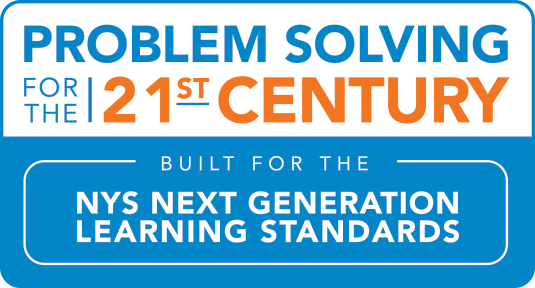NY-K.OA: Operations and Algebraic Thinking
Find the number that makes 10 when given a number from 1 to 9.
Record the answer with a drawing or equation.
e.g., using objects or drawings.
NY-1.OA: Operations and Algebraic Thinking
Understand the meaning of the equal sign, and determine if equations involving addition and subtraction are true or false.
e.g., Which of the following equations are true and which are false?
6 = 6, 7 = 8 - 1, 5 + 2 = 2 + 5, 4 + 1 = 5 + 2.
NY-2.NBT: Number and Operations in Base Ten
Add up to four two-digit numbers using strategies based on place value and properties of operations.
NY-3.NF: Number and Operations—Fractions
Recognize and generate equivalent fractions, e.g., `sf text(1)/sf text(2)` = `sf text(2)/sf text(4)`; `sf text(4)/sf text(6)` = `sf text(2)/sf text(3)`.
Explain why the fractions are equivalent.
e.g., using a visual fraction model.
NY-4.OA: Operations and Algebraic Thinking
Solve multistep word problems posed with whole numbers and having whole-number answers using the four operations, including problems in which remainders must be interpreted.
NY-5.NBT: Number and Operations in Base Ten
Using concrete models or drawings and strategies based on place value, properties of operations, and/or the relationship between operations:
- add and subtract decimals to hundredths;
- multiply and divide decimals to hundredths.
Relate the strategy to a written method and explain the reasoning used.
Notes on and/or: Students should be taught to use concrete models and drawings; as well as strategies based on place value, properties of operations, and the relationship between operations. When solving any problem, students can choose to use a concrete model or a drawing. Their strategy must be based on place value, properties of operations, or the relationship between operations.
Note: Division problems are limited to those that allow for the use of concrete models or drawings, strategies based on properties of operations, and/or the relationship between operations (e.g., 0.25 ÷ 0.05). Problems should not be so complex as to require the use of an algorithm (e.g., 0.37 ÷ 0.05).
NY-6.G: Geometry
Draw polygons in the coordinate plane given coordinates for the vertices. Use coordinates to find the length of a side joining points with the same first coordinate or the same second coordinate. Apply these techniques in the context of solving real-world and mathematical problems.
NY-7.RP: Ratio and Proportional Reasoning
Compute unit rates associated with ratios of fractions.
e.g., If a person walks `sf text(1)/sf text(2)` mile in each `sf text(1)/sf text(4)` hour, compute the rate as the complex fraction `sf(1/2)/(1/4)` miles per hour, equivalently 2 miles per hour with 2 being the unit rate.
Note: Problems may include ratios of lengths, areas, and other quantities measured in like or different units, including across measurement systems.
NY-8.G: Geometry
Apply the Pythagorean Theorem to find the distance between two points in a coordinate system.

